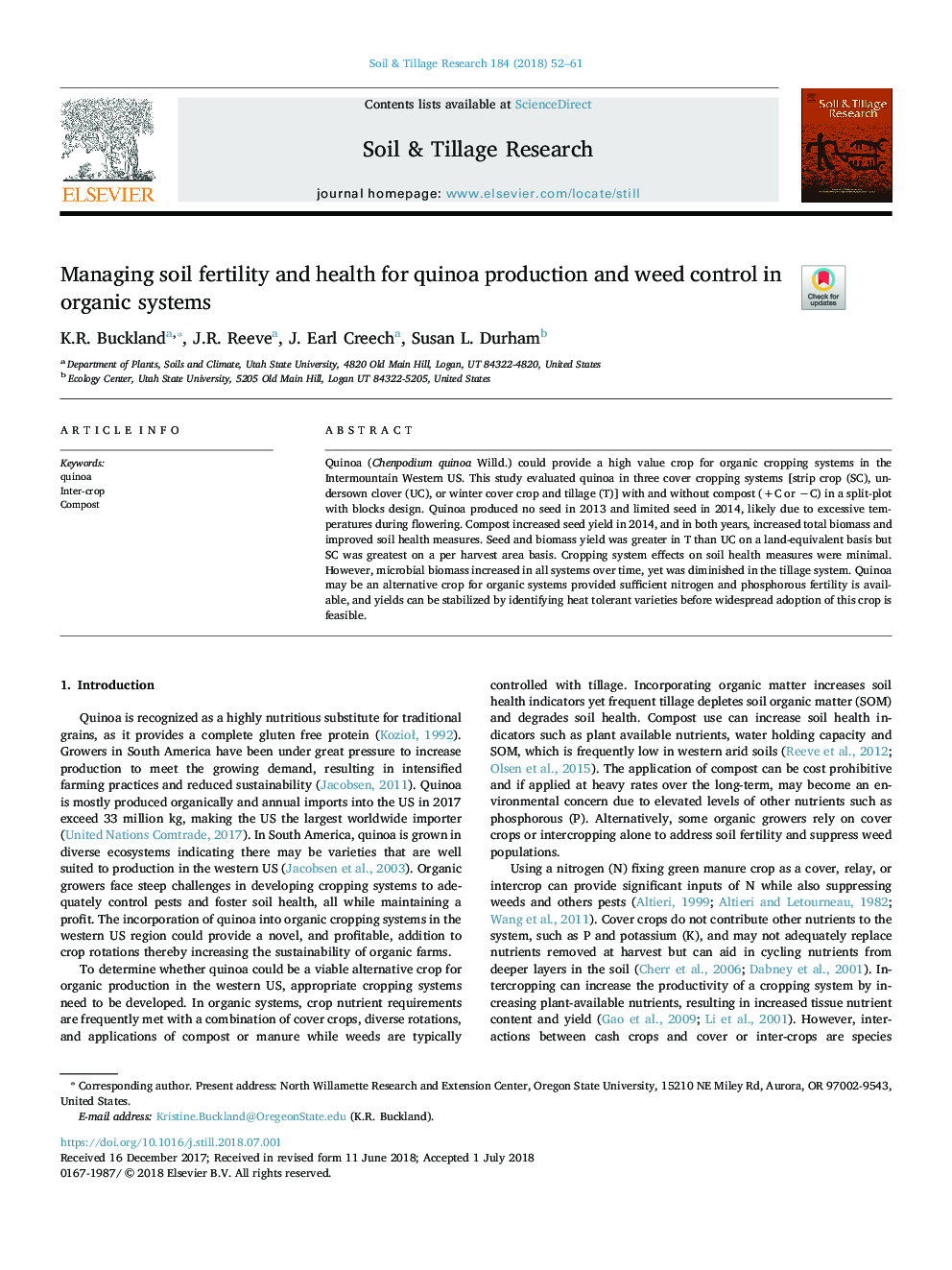| Article ID | Journal | Published Year | Pages | File Type |
|---|---|---|---|---|
| 6772883 | Soil and Tillage Research | 2018 | 10 Pages |
Abstract
Quinoa (Chenpodium quinoa Willd.) could provide a high value crop for organic cropping systems in the Intermountain Western US. This study evaluated quinoa in three cover cropping systems [strip crop (SC), undersown clover (UC), or winter cover crop and tillage (T)] with and without compost (+C or âC) in a split-plot with blocks design. Quinoa produced no seed in 2013 and limited seed in 2014, likely due to excessive temperatures during flowering. Compost increased seed yield in 2014, and in both years, increased total biomass and improved soil health measures. Seed and biomass yield was greater in T than UC on a land-equivalent basis but SC was greatest on a per harvest area basis. Cropping system effects on soil health measures were minimal. However, microbial biomass increased in all systems over time, yet was diminished in the tillage system. Quinoa may be an alternative crop for organic systems provided sufficient nitrogen and phosphorous fertility is available, and yields can be stabilized by identifying heat tolerant varieties before widespread adoption of this crop is feasible.
Related Topics
Physical Sciences and Engineering
Energy
Renewable Energy, Sustainability and the Environment
Authors
K.R. Buckland, J.R. Reeve, J. Earl Creech, Susan L. Durham,
